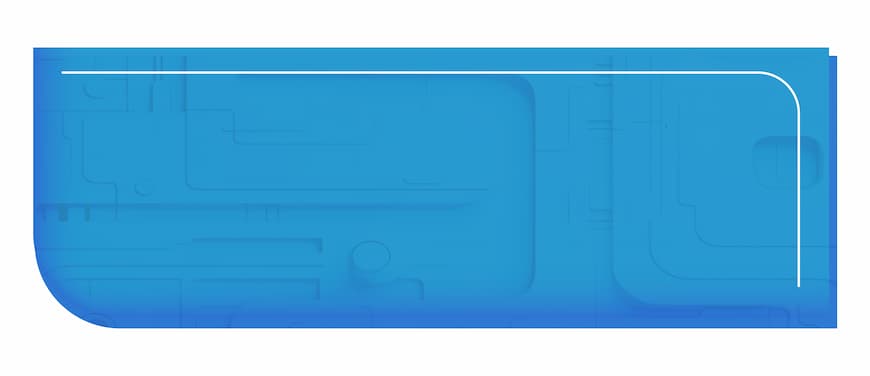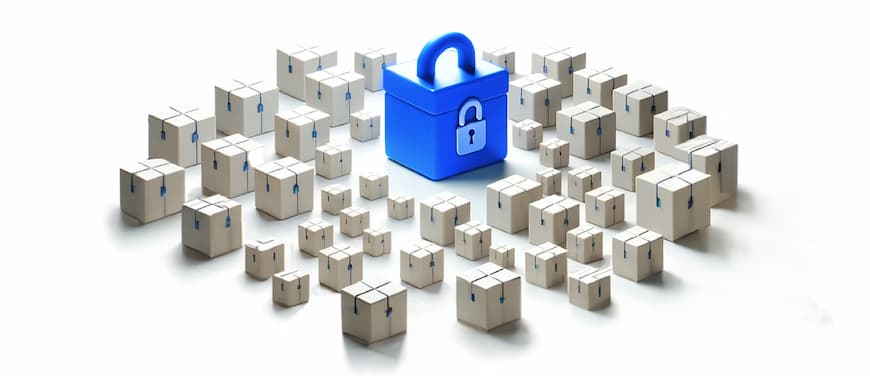In the fast-paced world of healthcare, the security and management of sensitive data are paramount. With increasing digitalization, the threat of data breaches looms large, making compliance with regulations like HIPAA more critical than ever. This is where Virtual Data Rooms (VDRs) come into play, offering a secure, efficient, and compliant way to handle sensitive health information.
In this comprehensive guide, we delve into the world of VDRs, exploring their significance in healthcare compliance, their functionality, and how solutions like ShareVault are leading the way in secure data management. Join us on this journey as we unravel the complexities of VDRs and their pivotal role in safeguarding the future of healthcare data.
The Importance of Healthcare Compliance

Healthcare compliance is a critical aspect of modern healthcare, ensuring patient privacy, data security, and adherence to regulatory standards. One of the central regulations in this domain is the Health Insurance Portability and Accountability Act (HIPAA), designed to protect patient health information. In recent years, the healthcare sector has seen a significant increase in data breaches, underscoring the need for robust compliance measures.
In 2023, there were 480 healthcare data breaches, impacting over a quarter of Americans, with an estimated 87 million patients affected. This figure more than doubled from 37 million in 2022. The breaches occurred in 49 states, with California experiencing the highest number of incidents. Notably, two major breaches alone were responsible for exposing nearly 20 million patient records (source: HealthExec.com).
The healthcare industry is particularly vulnerable to cyberattacks due to the sensitive nature of the data involved. In the first three months of 2023, healthcare firms reported 145 data breaches. In 2022, there were 707 incidents, with 51.9 million records stolen, highlighting the sector's attractiveness as a target for cybercriminals (source: Techjury.net).
Moreover, the cost implications are substantial. The healthcare sector experiences the highest data breach costs in any industry, averaging $408 per record. This high cost is not just limited to financial losses; it includes reputational damage and the need for increased marketing and advertising to rebuild trust (source: Techjury.net).
A significant portion of healthcare data breaches, about 78%, arise from hackers or IT incidents. The rate of unauthorized access or disclosure incidents has grown by 162% over the past three years, emphasizing the need for improved security measures and training (source: Techjury.net).
The healthcare industry's investment in cybersecurity is relatively low, with less than 6% of its budget allocated to this area. This underinvestment, combined with the increasing sophistication of cyber threats, makes the industry a prime target for cybercriminals (source: Getastra.com).
The consequences of data breaches in healthcare extend beyond financial losses. They pose a direct threat to patient privacy and confidentiality. The growing incidence and severity of these breaches make it clear that stringent compliance with healthcare regulations like HIPAA is not just a regulatory requirement but a critical necessity for protecting patients and maintaining the integrity of healthcare systems.
Ensuring compliance and bolstering cybersecurity measures in healthcare are vital steps toward mitigating these risks and safeguarding sensitive patient information from cyber threats.

What Are Virtual Data Rooms?
Virtual Data Rooms (VDRs) are secure online document repositories used for storing and sharing sensitive information. They are particularly useful in industries where the protection and management of confidential data are paramount, such as healthcare.
How Virtual Data Rooms Work

A VDR functions as a secure online space where documents can be stored and shared. It allows for controlled access, meaning only authorized personnel can view, edit, or download the documents based on permissions set by the VDR administrator.
Typically, VDRs offer robust security features like encryption, two-factor authentication, and audit trails to ensure data integrity and compliance with regulations such as HIPAA.
Benefits of Virtual Data Rooms in Healthcare
- Enhanced Security: VDRs provide advanced security measures to protect sensitive health information. This includes encryption of data both in transit and at rest, ensuring that patient records and other confidential information are safeguarded against unauthorized access and cyber threats.
- Ease of Access: Healthcare professionals often need timely access to patient data and other important documents. VDRs facilitate this by providing a centralized platform that can be accessed remotely. This is particularly useful for medical teams that require access to patient records from different locations or during emergencies.
- Improved Collaboration: In the healthcare sector, collaboration is essential for patient care, research, and administration. VDRs offer tools that enable multiple users to work on documents simultaneously, providing a platform for effective collaboration among healthcare providers, researchers, and administrative staff.
- Compliance with Regulations: Healthcare organizations are subject to stringent regulations regarding the handling of patient data. VDRs are designed with compliance in mind, offering features like audit trails, which log all user activity, and ensure that healthcare providers can meet regulatory requirements more easily.
- Streamlined Document Management: Managing the vast amounts of paperwork in healthcare can be daunting. VDRs streamline this process by providing efficient document management tools. This includes easy upload, organization, and retrieval of documents, which enhances operational efficiency.
- Cost-Effectiveness: Traditional methods of data storage and sharing, like physical document storage and mailing, are costly and less secure. VDRs eliminate the need for physical space and reduce the costs associated with document handling and storage.
- High Availability: Enterprise-grade VDRs provide features like geographic redundancy and real time failover so that your data remains accessible even in the event of major failures and even natural disasters - users continue having access to your data with seamless automated recovery even in the event that the VDR's physical infrastructure is seriously compromised.
Virtual Data Rooms are an invaluable tool in the healthcare industry. They not only provide a secure platform for managing sensitive patient data but also enhance operational efficiency, collaboration, and compliance with regulatory standards.
As the healthcare sector continues to evolve with technological advancements, the adoption of VDRs is likely to become more widespread, playing a key role in the digital transformation of healthcare.

Virtual Data Rooms and Healthcare Compliance
Virtual Data Rooms (VDRs) play a crucial role in maintaining compliance within the healthcare sector. By providing a secure and controlled environment for data management, VDRs help healthcare organizations adhere to stringent regulations and standards.
Compliance with Healthcare Regulations
Healthcare regulations like the Health Insurance Portability and Accountability Act (HIPAA) in the United States require strict measures to protect patient information. VDRs help in complying with these regulations through various features:
- Data Encryption and Security: VDRs offer robust encryption, both for data at rest and in transit. This high level of security ensures that sensitive patient information is protected against unauthorized access, a key requirement of HIPAA.
- Audit Trails: VDRs maintain detailed logs of all user activities within the system, including who accessed which documents and when. This feature is vital for compliance, as it provides transparency and accountability, making it easier to conduct audits and investigations if necessary.
- Access Controls: Healthcare organizations can control who has access to specific documents within the VDR. This granular access control helps in maintaining the privacy of patient records and other sensitive information, as required by compliance regulations.
- Data Backup and Disaster Recovery: Compliance regulations often require that healthcare organizations have robust data backup and disaster recovery plans. VDRs generally include these features, ensuring that critical patient data is not lost and can be quickly recovered in the event of a system failure or cyberattack.
Real-Life Examples and Case Studies
- Telehealth Services: With the rise of telehealth, a healthcare provider implemented a VDR to manage patient records and consultations securely. The VDR allowed them to store, access, and share patient data in a secure environment, ensuring compliance with HIPAA while providing remote healthcare services.
- Clinical Trials: A pharmaceutical company conducting clinical trials used a VDR to manage sensitive trial data. The VDR enabled them to share data securely with researchers, healthcare professionals, and regulatory bodies, ensuring compliance with data protection regulations and maintaining the integrity of the trial data.
- Mergers and Acquisitions: In a merger between two healthcare organizations, a VDR was used to securely share financial records, patient data, and other sensitive information. The VDR ensured that data was shared in compliance with industry regulations, safeguarding patient confidentiality during the transaction.
- Hospital Network Data Management: A hospital network implemented a VDR to manage patient records across multiple locations. The VDR provided a centralized, secure platform for storing and accessing patient data, ensuring compliance with various state and federal regulations.
Virtual Data Rooms are instrumental in helping healthcare organizations comply with regulatory requirements. By providing secure data management, controlled access, and compliance-oriented features, VDRs ensure that healthcare providers can maintain the highest standards of data privacy and security, crucial in the sensitive environment of healthcare.
Choosing the Right Virtual Data Room Provider

Selecting the right Virtual Data Room (VDR) provider is a critical decision for healthcare organizations. The ideal VDR should not only enhance data management and collaboration but also ensure compliance with healthcare regulations. Here are key factors to consider when choosing a VDR provider for healthcare needs:
Security Features
- The primary consideration should be the security features offered by the VDR. Look for providers that offer robust encryption, both for data at rest and in transit.
- Ensure that the VDR has strong access control mechanisms, such as two-factor authentication and customizable permission settings.
- Check if the provider offers features like remote shredding and digital watermarks to protect documents even after downloading.
Compliance with Regulations
- The VDR must comply with healthcare regulations such as HIPAA in the U.S., GDPR in Europe, or other relevant regional data protection laws.
- Look for providers that are audited regularly and have certifications like ISO 27001, which indicates adherence to best practices in information security.
User-Friendliness
- A user-friendly interface is crucial for ensuring that staff can efficiently utilize the VDR. An intuitive design can significantly reduce the learning curve and improve adoption rates.
- Consider providers that offer customizable interfaces that can be tailored to the specific needs and workflow of your organization.
Document Management Capabilities
- The VDR should offer robust document management features such as easy uploading, indexing, searching, and tracking of document versions.
- It should support a wide range of file formats and allow for seamless integration with other tools and systems used by the healthcare organization.
Customer Support and Training
- Reliable customer support is essential. Ensure that the VDR provider offers comprehensive support through various channels like phone, email, and chat.
- Check if the provider offers training and resources to help your team get the most out of the VDR.
Audit Trails and Reporting
- The VDR should provide detailed audit trails that log user activity, document access, and changes. This feature is vital for compliance and security monitoring.
- Look for VDRs that offer robust reporting capabilities to help you understand how the data room is being used and by whom.
Scalability and Flexibility
- Consider the scalability of the VDR. It should be able to accommodate the growing amount of data and the evolving needs of your organization.
- Flexibility in terms of customization and integration capabilities is also important to ensure that the VDR can adapt to your specific operational needs.
Cost-Effectiveness
- Evaluate the pricing structure of the VDR provider. It should offer transparent pricing without hidden costs.
- Compare the cost against the features and benefits provided to ensure you are getting value for your investment.
Reputation and Reviews
- Research the reputation of the VDR provider. Look for reviews and testimonials from other healthcare organizations.
- Consider asking for references or case studies to better understand how the VDR has been utilized in similar settings.
By carefully evaluating these aspects, healthcare organizations can select a VDR provider that not only meets their specific data management and security needs but also enhances their overall efficiency and compliance posture.
Future of Healthcare Data Management

The future of healthcare data management is poised to be transformed by technological advancements and evolving regulatory landscapes. Virtual Data Rooms (VDRs) will play a pivotal role in this evolution, adapting to emerging trends and challenges.
Increased Emphasis on Data Security and Privacy
With rising cybersecurity threats and data breaches, the importance of data security in healthcare will only grow. VDRs are expected to incorporate advanced security technologies like AI-driven threat detection and blockchain for enhanced data integrity and traceability.
Integration of Big Data and Analytics
The healthcare industry is increasingly leveraging big data for predictive analytics and personalized medicine. VDRs will likely evolve to support the integration and analysis of large datasets, providing secure environments for data processing and sharing.
Expansion of Telemedicine and Remote Healthcare Services
The COVID-19 pandemic has accelerated the adoption of telemedicine. In the future, VDRs could offer more features to support remote healthcare delivery, such as secure video conferencing and real-time sharing of patient data.
Compliance with Evolving Regulations
As healthcare regulations continue to evolve, VDRs will need to adapt quickly. Providers that can offer flexible and up-to-date compliance features will be critical in helping healthcare organizations navigate the changing regulatory environment.
Enhanced Collaboration Tools for Research and Development
The role of VDRs in facilitating collaboration for clinical research and pharmaceutical development will expand. Features like secure messaging, project management tools, and collaborative editing could become more prevalent.
Adoption of AI and Machine Learning
Artificial Intelligence (AI) and Machine Learning (ML) technologies are expected to be integrated into VDRs to automate routine tasks, improve data analysis, and enhance user experience.
Greater Patient Involvement in Data Management
Future VDRs might offer portals for patients to access their own health data securely, contributing to more patient-centered care and informed decision-making.
Cross-Industry Collaboration
Healthcare data management might see more cross-industry collaborations, with VDRs facilitating secure data sharing between healthcare providers, insurers, and other stakeholders like tech companies.
Emphasis on User Experience and Accessibility
VDRs will likely focus more on user experience, offering intuitive interfaces and mobile accessibility to cater to the needs of a diverse user base, including clinicians, administrators, and patients.
Sustainability and Green IT
As part of the broader movement towards sustainability, future VDRs may emphasize eco-friendly operations, such as reducing the carbon footprint of data centers.
Incorporating expert opinions and recent research findings, these trends suggest a dynamic future for healthcare data management, with VDRs at the forefront of innovation and security. As healthcare continues to embrace digital transformation, the capabilities and applications of VDRs are expected to expand significantly, playing a crucial role in shaping the future of healthcare.
Conclusion
Throughout this blog, we've explored the critical role of Virtual Data Rooms (VDRs) in healthcare, emphasizing their importance in ensuring compliance, enhancing data security, and facilitating efficient data management. We began by discussing the significance of healthcare compliance, highlighting the alarming statistics of data breaches and the necessity for robust security measures.
We then delved into the functionality of VDRs, shedding light on their benefits, such as improved security, ease of access, and collaborative capabilities, which are essential in the healthcare sector.
In discussing the intersection of VDRs and healthcare compliance, we examined how these digital platforms help healthcare organizations meet stringent regulatory requirements, providing real-life examples to illustrate their effectiveness. We also offered guidance on selecting the right VDR provider, emphasizing factors like security features, compliance, user-friendliness, and cost-effectiveness.
Looking ahead, we speculated on future trends in healthcare data management, foreseeing an increased emphasis on security, integration of big data, and the adoption of AI and machine learning. These advancements will continue to elevate the role of VDRs in healthcare.
The takeaway is clear: in an era where data breaches are rampant, and regulatory demands are stringent, the need for secure and efficient data management solutions like Virtual Data Rooms is undeniable. For healthcare organizations seeking to embrace this digital transformation while maintaining compliance and safeguarding patient data, exploring VDR solutions is a step in the right direction.
As a next step, I encourage you to consider the importance of secure data management in healthcare and explore how Virtual Data Rooms can enhance your organization's operations. For those interested in seeing how a state-of-the-art VDR operates, ShareVault offers a free demo of their platform, tailored to the specific needs of healthcare compliance.
Experience firsthand the benefits of a secure, user-friendly, and compliant data management solution.
